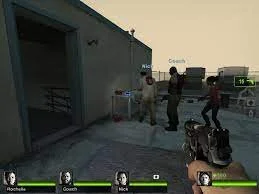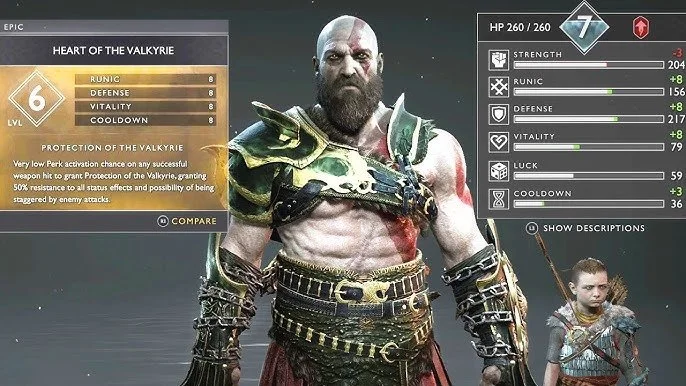Game UX: Understanding player-states
Game designers must adapt interfaces to match players' constantly changing psychological states. When interfaces align with how players feel and think in different gameplay moments, the experience becomes seamless and intuitive. Here's how..
Flow State
Players enter flow when challenge and skill perfectly balance, creating deep immersion where time seems to disappear.
Example: Tetris Effect
The interface in Tetris Effect enhances flow by minimizing distractions. As blocks fall faster and players enter deeper concentration, the game's interface recedes. The game field remains sharp while background elements pulse and react to your movements without demanding attention. Score indicators update peripherally without requiring conscious processing. Music and visual effects intensify with your performance, but never interrupt your focus on the falling blocks.
This design works because it provides essential information without breaking your concentration. You process block shapes, rotation patterns, and landing positions instinctively rather than consciously. The interface becomes an extension of your thinking rather than a separate system you must navigate.
Stress State
During high-pressure situations, players experience tunneled vision, reduced working memory, and increased error rates.
Example: Left 4 Dead 2
When you're surrounded by zombies in Left 4 Dead 2, the game adapts brilliantly to your stress state. Your teammates glow with bright outlines that remain visible even through chaos and obstacles. Health and ammunition information uses high-contrast colors that cut through visual clutter. When teammates are in trouble, their character models emit distinct audio cues that register even when you can't see them.
Most importantly, the game simplifies interactions during peak stress. Complex inventory management becomes impossible during a horde attack, so the game limits your options to what's immediately useful. This works because Valve understands that under stress, players can only process about 25% of the information they normally would. By prioritizing survival-critical information and reducing complexity, the interface helps you remain effective even when panicking.
Discovery and Exploration State
When exploring, players become curious investigators seeking patterns and secrets in the environment.
Example: Journey
Journey strips its interface to near-invisibility during exploration. Mountains in the distance serve as natural waypoints without explicit markers. Cloth creatures flutter subtly to attract attention rather than using obvious quest indicators. When you need to recharge your scarf (your ability to fly), glowing symbols in the environment replace traditional meters or gauges.
This minimalist approach works because it respects your natural curiosity. Instead of following arrow markers or minimap dots, you navigate by landmarks and environmental cues just as you would in real exploration. The game trusts your natural perceptual abilities to notice things that stand out in the landscape. This creates genuine discovery moments rather than checklist-following behavior.
Learning and Mastery State
When actively learning game mechanics, players need clear feedback and pattern recognition.
Example: Portal
Portal's test chambers brilliantly support the learning state. Early chambers isolate individual mechanics with stark visual language—white walls for portalable surfaces, dark tiles for non-portalable areas. The game places orange guidance markers exactly where you need to look to understand the next step.
As you demonstrate mastery, the interface evolves. Guidance becomes more subtle and eventually disappears entirely. Complex puzzles introduce multiple elements simultaneously because you can now process them together. Most importantly, Portal provides immediate, clear feedback for every action. You always understand why something worked or failed, creating perfect learning conditions. The game recognizes when you've entered the mastery state by tracking your speed and accuracy, then advances you to more complex challenges accordingly.
Social State
In multiplayer contexts, players become concerned with team coordination, status, and emotional expression.
Example: Overwatch
Overwatch's interface brilliantly supports team awareness while respecting emotional needs. Team members' health bars remain visible through walls, letting you track allies without constant communication. Ultimate ability indicators show teammates' readiness for coordinated attacks with simple percentage numbers. The kill feed provides just enough information to understand match flow without overwhelming combat focus.
The game also acknowledges emotional expression needs through its communication wheel. Quick emotes and voice lines let you express excitement, gratitude, or frustration without typing or speaking. Post-match highlights and "Play of the Game" sequences satisfy recognition needs, letting players feel acknowledged for their contributions even in defeat.
This design works because it understands that multiplayer games are social experiences first, competitive challenges second. By supporting both strategic coordination and emotional expression, Overwatch creates interfaces that enhance team cohesion rather than just individual performance.
State Transitions: The Hidden Challenge
The most sophisticated games anticipate transitions between these states and help players adjust smoothly.
Example: God of War (2018)
God of War excels at state transitions. As you approach combat areas, the interface subtly shifts—Kratos' combat stance changes, his son Atreus becomes more alert, and the UI elements for combat readiness become more prominent. When combat ends, the game provides a natural decompression period where loot collection and environment exploration take priority, shifting the interface focus accordingly.
During puzzle sequences, combat elements fade to the background while environmental interaction prompts become more visible. This anticipatory design prepares you psychologically for each state change before it happens, reducing cognitive friction and maintaining immersion.
Why This Matters
Understanding player-state awareness represents the difference between functional interfaces and truly exceptional ones. Games that recognize and respond to your psychological state create deeper immersion and satisfaction than those with perfectly attractive but psychologically insensitive designs.
By designing for how players actually think and feel during different gameplay moments, designers create experiences that feel intuitive, responsive, and natural—even when the underlying systems are incredibly complex.





